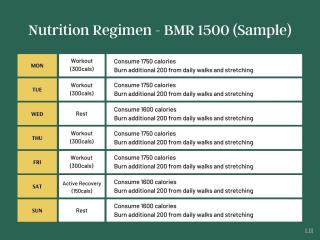SMART goal setting is one of the most valuable methods used by high achievers today to actualize their life goals time after time. SMART goal setting is the inverse of random or carefree goal setting without strategy.
Perhaps, you’ve always wished to get back in shape, get an annuity, or take control of your finances, but you failed to act. When you approach your goals with a care-free and nonchalant attitude, you’re less likely to achieve them.
You should have a strategic goal setting method in place, and learning how to set smart goals is imperative in this case. The method is time-tested and purposeful, meaning it can help you achieve your goals now.
To achieve your goals consistently and join the pack of high achievers out there who have consistently achieved many of their goals, you must be prepared to do what these people have been doing, and be ready to do the right thing: SMART goal setting.
What Is the SMART Model for Setting Goals?
SMART goal setting is a goal-setting method that considers certain factors about a goal relative to the person setting it. These factors are simply the five different letters in the SMART acronym for goal setting.
It is relative to the person setting the goal because what is true for A may not be true for B; or what is possible for A or within A’s ability to achieve may not be possible for B or within B’s ability to achieve.
What does the goal setting acronym SMART stand for?
S—Specific M—Measurable A—Achievable R—Realistic/Relevant T—Time-boundIs it possible that this acronym can make a long lasting impact in your life?
Is it possible that a mere goal setting metric like SMART can help you achieve so many of your unfulfilled goals?
Is it possible that if you practice SMART goal setting, you will be able to have faster results, understand your goals better, overcome the habit of procrastination, and achieve a lot?
The power to achieve your goals is in your hands.
It is important to extend the inquiry by asking: How many times have you said you’ll do “X,” but failed to do so?
We all have goals, and we all have 24 hours each day at our disposal. While some people find it easy to achieve their goals without procrastinating, some find it difficult to do so.
For some people who have succeeded again and again in achieving their goals, they have simply found an easy way of doing this. Is there something they know that you don’t?
How Smart Goal Setting Makes a Lasting Impact
Smart goal setting examples can be found all around you. Through SMART goal setting, Stephen Cooley was able to grow his real estate business to the point of closing at $110 million in sales when the average price point of homes was between $100,000 – $200,000 in South Carolina.
Through SMART goal setting, Steve Jobs was able to improve the fortunes of Apple and prevent the company from going bankrupt, even when it had barely 90 days left before being declared so.
SMART goal setting can make a lasting impact in your life in several ways.
Make Your Goal Clearer
When you use the SMART criteria to set goals, it is easier for you to understand the various phases of your goal.
By using SMART goal setting, you’re able to ask yourself relevant questions pertaining to your goal.
Motivate You Into Acting on Your Goals
When you use SMART goal setting and break down the goal into smaller goals or milestones, the bigger goal no longer looks intimidating or impossible.
Jack Canfield, co-author of Chicken Soup for the Soul, wrote in his book How to Get from Where You Are to Where You Want to Be about how they applied the rule of five in marketing their book, Chicken Soup, and were able to make the book a best seller after some months. The rule of five simply means doing five specific things every day that will move you closer to achieving your goal.
In order not to be overwhelmed, you would have to measure your performance using the right metrics. Here we are considering the Measurable and Achievable aspects of the SMART acronym. It is critical that you measure yourself in terms of lead measures.
What are lead measures? They are the things you do that leads you closer to your goals. On the other hand, you would have to avoid “lag measures.”
While lag measures mean a successful outcome that you wished for and got, they can be emotionally draining and deceitful because, whenever they don’t happen, you can become discouraged.
Therefore, it is better to stick to lead measures.
Help You Save Time
You can achieve more when you use SMART model goal setting.
To be strategic, your goal would have to be specific, measurable, achievable, realistic, and time-bound. If you can’t identify any of these points in your goal, you probably will be wasting your time on a wild goose chase.
When your goals are written down, it’s easier for you to go into action mode.
Improve Your Self-Discipline
Self-improvement is an important thing for everyone to do periodically. When you set SMART goals, it makes you realize that you have to sit up and work on achieving them.
How to Set SMART Goals
To make your SMART goals work, use the following tips:
Specific
Every goal ought to be specific. It is important to guard against making vague goals because even when they have been achieved, you may not know. This is because you weren’t specific enough.
For example, “I will start planning toward retirement” is vague. Rather than write that, you could say, “I will start planning toward retirement by starting an annuity plan.” This is more specific.
When you are specific on your goal, it’s easier for you to identify all its components and work accordingly toward achieving it.
Measurable
Your goals must be measurable. When they are measurable, it’s easier for you to follow through.
A goal like this is not measurable: “I want to make millions of dollars.” You can make it more measurable by saying, “I want to make one million dollars selling one hundred thousand copies of my book at ten dollars each.”
Also, using our SMART goal setting examples while explaining the Specific acronym, you can make the goal more measurable by saying, “I will start planning toward retirement by starting an annuity plan and saving $500 every month.”
Achievable
How realistic or actionable is your goal? Is it practical enough to fit into a given time frame? Is it something you are able to achieve in your capacity?
You would only be setting yourself up for failure if you sets goals that are not reasonable.
A goal like this is highly unrealistic and, therefore, not achievable: “I want to be the Governor of Texas in six months,” especially since the elections will be coming up in three years.
Goals must be written down relative to the experiences of the one setting them. They must resonate with you. It is important that you have at least some of the resources needed to actualize this goal.
It is also important that you consider your time frame. When the time frame to achieve a complex goal is too short, it is rare that such goal will be completed.
Thus, using our previous example, if you write “I want to make one million dollars in ten days selling one hundred thousand copies of my book at ten dollars each,” you would only be setting up yourself for failure.
This is especially true if you’re not a popular author or if you’ve never sold even up to one thousand copies of any of your previous books, whether e-copy or in print.
Realistic/Relevant
Before you proceed to making the commitment toward that goal, you need think about how realistic and relevant it is.
Being realistic means you should be willing to make all the commitments required for that goal to be achieved. If your goal is relevant, it fits into the life you’ve imagined for yourself.
Time-Bound
Every goal must have a commencement date and an end date written down. It is also important that you break down your goals into phases, chunks, bits, or milestones.
The act of having deadlines set to your goals is ample motivation that drives you into action. Without a deadline, it is not possible for you to know if you’re making headway with your goals.
“I will start planning toward retirement by starting an annuity plan and saving $500 every month for the next twenty five years” is a time-bound goal.
Remember that some goals are short-term while some are long-term. It is important to always bear this in mind, because this will help you in making a clear and realistic strategy when SMART goal planning.
Without SMART goal setting in view, much of our goals may likely end in our minds, on paper, or just midway into implementation. SMART goal setting reveals to us all the action points of our goals and helps us to have an awareness of every aspect of our goals.
The Bottom Line
What matters at the end of the day is what you do with the contents of this article because the power to achieve your goals is in your hands.
It is not enough to have a goal. It is not enough to put it down in writing. It is important to have a strategy in mind while putting it down. This strategy is a guideline or set of rules that point you in the right direction. It is SMART goal setting in the given circumstance.
After writing down your goals, you will have to be ready to take action. There should be a clear action point. Write down what you need to do on daily, weekly, or monthly basis.
When your goals are realistic, they make them worth the chase. One of the things to bear in mind is that, in order not to be overwhelmed by the daunting nature of your goals, remember to always break them into milestones, chunks, or bits. In fact, take one day at a time.
Do not bother yourself with the one-year, three-year, five-year or ten-year plan as this may likely overwhelm you with fear and doubt. Let your focus be on each day. What will I be doing today? Consider this and go for it.
More on the SMART Model for Setting Goals
Featured photo credit: Unsplash via unsplash.com





























































